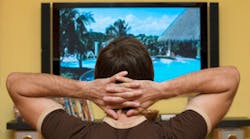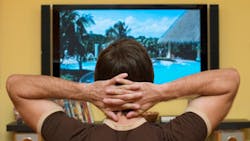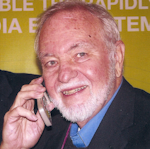Over 80% of us subscribe to some form of pay TV service, whether cable- or-satellite based. We get hundreds of channels, most of which we do not watch. And while the service is generally good, the monthly cost continues to go up. According to research firm Parks Associates, the average U.S. monthly pay TV bill is $84, but many pay more. With premium channels and high-speed internet service bundled in, monthly bills are often ballooning to over $200 per month (too much even for the generally affluent).
On top of that, Parks Associates says that about 63% of consumers also subscribe to one or more of the over the top (OTT) streaming services like Netflix or Hulu. 31% have multiple OTT subscriptions. This leads me to wonder our video viewing habit is growing out of control. Most people today sit in front of a screen all day, be it a computer, smartphone, tablet, or TV set. Is that a good thing?
The increasing cost is causing subscribers to downgrade their service to save money. Some consumers have “cut the cord” completely in favor of an internet service subscription only plus some OTT for movies and TV series. The outcome of these trends has essentially stopped the growth of pay TV services. The appeal of OTT is that you can watch it on your smartphone, tablet, or oversized 4K TV thanks to Wi-Fi.
Perhaps the most interesting revelation by Parks Associates research is that many consumers have dropped pay TV completely and opted for over the air (OTA) TV. The percentage of U.S. households that use antenna-only TV has grown from about 9% in 2013 to 15% today, and that number continues to grow. Even the Consumer Technology Association (CTA) has reported an uptick in TV antenna only households. With TV stations broadcasting full HD digital television (DTV), picture quality is excellent when you get enough signal. That means you must have a good TV antenna just as you do in any wireless application.
My daughter and son-in-law recently cut the TV cord in favor of OTA TV. They kept the high-speed DSL line. After analyzing their TV consumption they concluded they could get all the news, sports, and entertainment they wanted from local TV channels. My two grandkids mostly watch movies on their smartphones or tablets, so they did retain their modestly priced Netflix subscription. The outcome is a radically lower TV bill.
As for antennas, they tried several indoor types on their two sets, with mixed results. My son-in-law eventually put up a small outdoor antenna that gets the channels for ABC, CBS, CW, Fox, ION, NBC, PBS, TBN, Telemundo, Univision and a few other independents. He used a splitter and the house cable wiring to distribute the signal. Picture quality is excellent.
A few years ago, I cut costs by dropping our second cable box in the guest bedroom, hoping for a good OTA experience. I tried two indoor antennas, with pitiful results—I got only one channel when many are available. As it turns out, I am basically too far out in the suburbs to get good reception. An outdoor antenna is only the way to go. I did not have the physical arrangement to do that, and I never got around to trying the attic. Part of the problem is that my homeowner’s association covenants forbid outdoor antennas. However, Dish and DirecTV dishes are allowed. I assume a modest outdoor OTA antenna would also be permitted. No Yagi on a 50-ft. crank up tower.
The OTA TV option is a good one. It is free except for the antenna expense. Just be sure you are in a location where the signal strength is sufficient. The FCC has some great information at the website indicated below. It includes their DTV Reception Maps Tool. You plug in your zip code and it gives you a list of the TV stations available to you with a signal strength estimate. You can also access their guide on TV antennas—a great resource.
Another resource is Antennas Direct with their Transmitter Locator tool that also gives you a map of the TV stations nearby and an estimate of potential reception.
One more good source of info is Antenna Web. It provides station data, and you can choose and buy an antenna online.
Also try the NoCable site.
There are many other such resources and TV antennas are still available at places like Best Buy, Walmart, Radio Shack, Fry’s, and others. If you are looking for a way to save a few bucks this year, give this a try. I think you will be surprised at what you find.
But that’s not all. That trend could continue once OTA 4k TV is available. The Advanced Television Systems Committee (ATSC) is working on a new U.S. standard to cover 4k, including high dynamic range (HDR) and other advanced features. ATSC 3.0 standard, as it is called, will use OFDM and LDPC error correction to make this happen. That is not compatible with the existing ATSC 8VSB standard now in use, so during any transition, TV sets will need to cover the current and 3.0 standards.
No availability date has been given for 3.0, but this is surely in our future thanks to support from the National Association of Broadcasters (NAB). It’s just one more reason to consider cutting the cord and getting an antenna.



